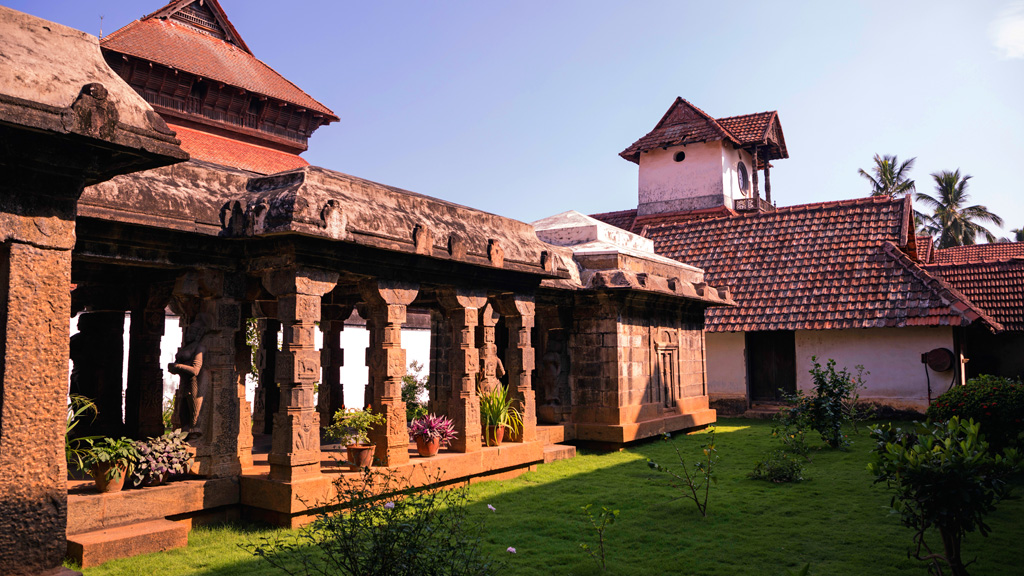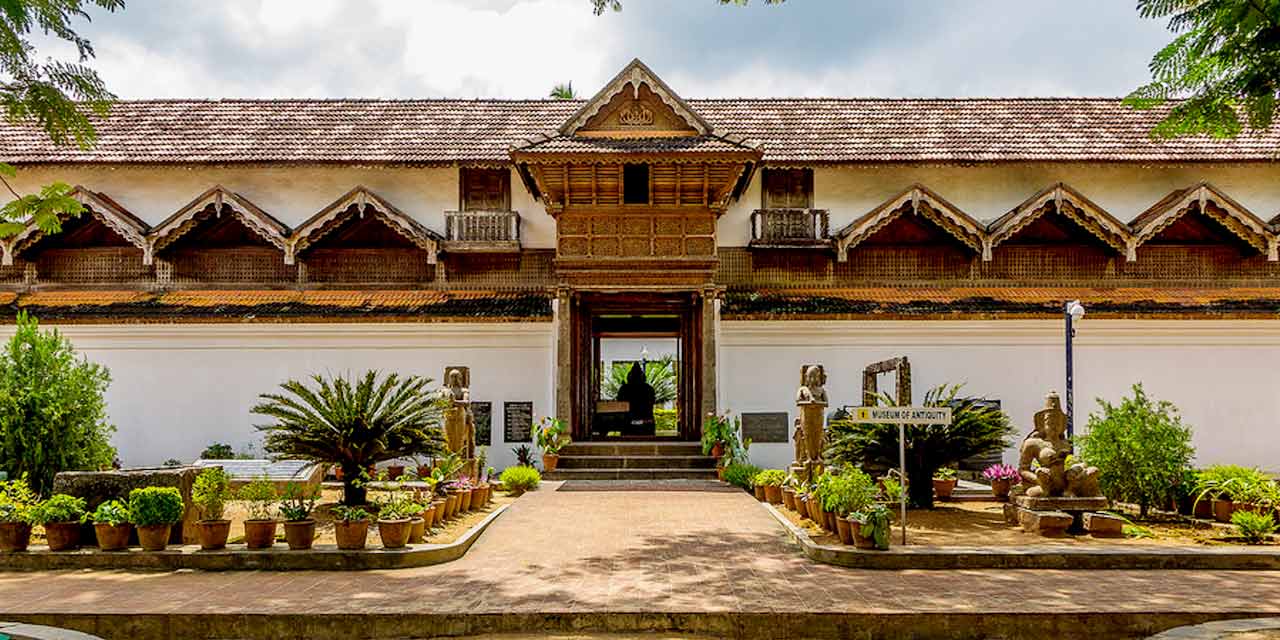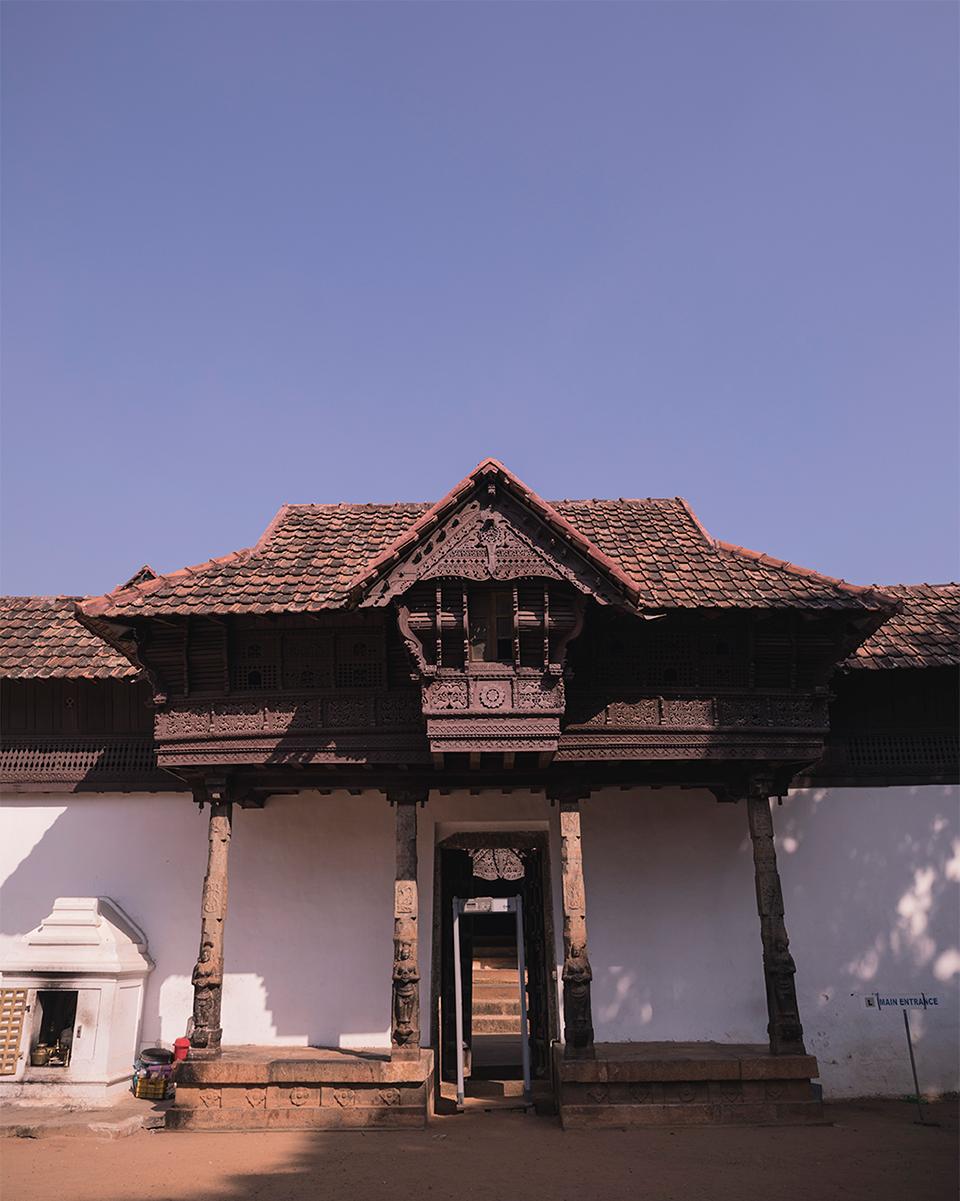Padmanabhuram Palace, Kanyakumari district, Tamil Nadu, India (1601 CE)**
Artist/Designer: Ravivarman Kulaśēkhara
Project Location: India










Style/Period(s):
Vernacular
Primary Material(s):
Stone, Wood
Function(s):
Entertainment
Related Website(s):
Significant Date(s):
1601
Additional Information:
Publications/Texts in Print:
Heston, Mary Beth. "The Nexus of Divine and Earthly Rule: Padmanābhapuram Palace and Traditions of Architecture and Kingship in South Asia." Ars Orientalis 26 (1996): 81-106.
Lambourn, Elizabeth. "Carving and Communities: Marble Carving for Muslim Patrons at Khambhāt and around the Indian Ocean Rim, Late Thirteenth-Mid-Fifteenth Centuries." Ars Orientalis 34 (2004): 99-133.
Poyil, Manjula. "THODIKALAM MURAL PAINTINGS: FEATURES, MEANINGS AND TECHNIQUES." Proceedings of the Indian History Congress 72 (2011): 1239-246.
"The Setupatis, the Dutch, and Other Bandits in Eighteenth-Century Ramnad (South India)." Journal of the Economic and Social History of the Orient 45, no. 1 (2002): 139.
Building Address: Chakala, Thuckalay, Tamil Nadu, India
Significant Dates: New Construction 1601, 17th Century;
Supporting Staff/ Designers:
Tags: India, Padmanabhuram Palace, Kanyakumari district, Tamil Nadu, 1601, 17th Century, Vernacular, History and Interiors, Stone, Wood, Entertainment, Travancore, Lime, Herbs, Woodwork, Craftsmanship.
This palace is split into a series of smaller cottages that all together make up the palace complex. The whole palace is a protected monument , the area where this was built is close to the rugged mountains of the Western Ghats which provided natural protection to the settlements around the palace area. The abundance of fertile farmland and plenty of water was the factor that attracted royals to settle down in this region. The palace is associated with Travancore history. It is the largest wooden palace in all of Asia, spread over 6.5 acres with intricate woodwork in the interiors that reflect the craftsmenship of the people within the region. For the construction of the palace, lime was a commonly used material. This lime was mixed with herbs and other secret ingredients, this was used to lay the flooring of the specific area which then gave it a mirror like finish. This palace is situated in a place with a very humid and tropical climate and therefore the roof's have large overhangs so that the rain does not enter the space.
Viewers should treat all images as copyrighted and refer to each image's links for copyright information.